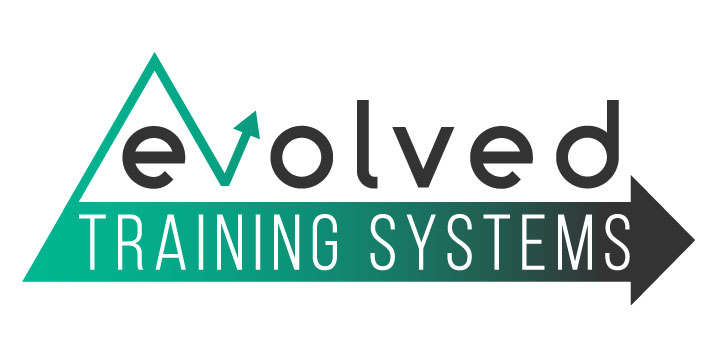Before we delve into the topic of HOW TO PROGRESS, we first need to discuss the actual meaning of PROGRESSIVE OVERLOAD, and the way in which we should conceptualize overload, in general.
There is a pervasive belief in the training industry that progressive overload requires weight to be added to the bar every session, or on some pre-determined incremental timeframe. Beyond the novice stage, it is just not realistic to expect load to be increased in this manner. The body just doesn’t get stronger and bigger at that rate.
It wouldn’t take long for the trainee to realize that adding weight every session is causing a decrease in actual VOLUME load (meaning that reps are dropping to accommodate the increased weight). If reps don’t fall, then proximity to failure will decrease (meaning that you move closer and closer to failure as a result of attempting to match reps from the prior week).
The body doesn’t adapt this quickly. How fast does it adapt?
That depends on many variables, including training age, proximity to genetic potential, the current state of neural efficiency with that exercise, as well as all the aspects that go into recovery and preparedness for the session.
Since adaptation is not something that occurs on a weekly basis, we need a better system that allows us to progress in a manner that meets adaptations as they occur in real time.
Conceptually, this means that we change the way we perceive overload.
Old view:
I must add load regularly to ensure I am getting bigger and stronger over time
New view:
I got bigger and stronger; therefore I need to add load to ensure work sets are still challenging
The below framework for “Dynamic Double Progression” (DDP) describes a progression model in which reps and load are added as you realize that adaptations have occurred.
DYNAMIC DOUBLE PROGRESSION
Most people are familiar with a typical “Double Progression” which looks like this with an 8-12 Rep Range:
| WEEK | Set #1 | Set #2 | Set #3 |
| Week 1 | 100 x 9 | 100 x 9 | 100 x 9 |
| Week 2 | 100 x 10 | 100 x 10 | 100 x 10 |
| Week 3 | 100 x 11 | 100 x 11 | 100 x 11 |
| Week 4 | 100 x 12 | 100 x 12 | 100 x 12 |
| Week 5 (increase) | 105 x 8 | 105 x 8 | 105 x 8 |
| Week 6 | 105 x 9 | 105 x 9 | 105 x 9 |
| Week 7 | 105 x 10 | 105 x 10 | 105 x 10 |
This typical Double Progression makes sense in theory, but in application, we rarely see things increase in such a linear fashion.
Eventually, you would reach a point where technique is compromised as a means of achieving your self-imposed “target reps,” or else you will fail to achieve desired target. What then?
Another issue with this progression format is that it fails to equate effort set to set. If you complete three sets of the SAME REP TARGET, it is inevitable that the third set will be more difficult than the first set, which was performed when you were fresh.
But why is it important to equate effort set to set?
The main reason is because it allows you to control fatigue and eliminates variables if progress begins to stall. It provides the athlete or coach an assessment tool to determine whether things are working.
Dynamic Double Progression is a framework for adding load and reps to movements week to week, where each set operates on its own progression track.
The conceptual implementation of autoregulated progression set to set has been used for years, but just recently, Brian Minor put a name this precise approach.
In a Dynamic Double Progression, we can work within the same 8-12 rep range, and progress each set as adaptations require an increase in load or reps to remain at the same relative effort level.
For this example, assume we are looking to match effort set to set, and we will target approx. 2 reps shy of failure on each set.
Whenever any INDIVIDUAL set hits the TOP OF THE REP RANGE with 2 Reps in Reserve (RIR), then that one set increases the following week, while subsequent sets remain at the lower weight until these also top out the rep range (i.e. hit 12 reps)
| WEEK | Set #1 | Set #2 | Set #3 |
| Week 1 | 100 x 11 | 100 x 10 | 100 x 9 |
| Week 2 | 100 x 12 (increase) | 100 x 11 | 100 x 10 |
| Week 3 | 105 x 11 | 100 x 12 (increase) | 100 x 11 |
| Week 4 | 105 x 12 (increase) | 105 x 10 | 100 x 12 (increase) |
| Week 5 | 110 x 11 | 105 x 11 | 105 x 9 |
| Week 6 | 110 x 11 | 105 x 12 (increase) | 105 x 10 |
| Week 7 | 110 x 12 (increase) | 110 x 10 | 105 x 11 |
When we see progress trend in this manner with “reps in reserve” held static for the most part, we can be assured that progress has actually occurred.
DAILY PREPAREDNESS
There exists one additional point regarding general “preparedness” for each individual session.
It is not realistic to be at optimal functionality for every session. Here is a small list of some things that can impact your ability to meet your own expectations:
1. Low quality or duration of sleep
2. Low quality or insufficient intake of calories
3. Stress (work, homelife, financial etc…)
The DYNAMIC part of this progression model is what allows flexibility to accommodate life.
Yes, in a perfect world, we can follow the 7-week example laid out above. However, if there is a day with poor preparedness, you may need to drop load and/or reps.
Let’s say you enter the session with intention to hit 105 x 12 (since you did 11 last week). As you get into the first work set, you quickly realize you would have to go to failure to achieve 12 reps. So instead you stop at 10 reps to maintain the target “2 reps in reserve.” Then you lower the load for subsequent sets. This doesn’t mean you got weaker, or that you are losing muscle. It just the stimulus that is adaptive for your body in THIS ONE SESSION.
In contrast, some days you may go into the gym and feel like a superhero. Same example as above, you intend to achieve 105 x 12 (since you did 11 last week). You get to 12 reps and still have good bar speed. You end up achieving 14 and maintain your 2 reps shy of failure. Great work! Maybe you decide to keep 105 for the next couple sets, too.
Progression is not linear. Adaptations do not occur linearly. It is not realistic to expect reps and load to increase every week.
With Dynamic Double Progression, you can go take that shit when you feel awesome, and dial it back to allow the body to recover and repair when you aren’t at your most optimal.
Since progression doesn’t occur linearly, we can’t expect adaptations to occur linearly either.
What we want to see is a general trend over time that loads and reps are going up while maintaining relative effort. This means we have indeed gotten bigger and stronger!
Implementing DDP is the most effective method of auto-regulated progression that allows training stimulus to increase as adaptations are realized in real time.




